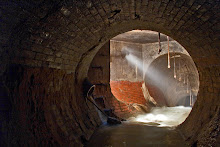The passage I selected is situated in book three and relates Caravaggio escaping of prison.
I found interesting to try and link him to Caravaggio,the Italian Renaissance painter as they share many features. (I’ll put C., the italian renaissance painter's full initials to diferenciate him from ITSOAL's character.)
passage from pages 187 to 192:
The passage is rather long as I wanted to choose an extract that encapsulated the themes of painting, light and dark and allusions to Caravaggio as a thief and the challenging of boundaries through Art. (escaping prison by painting and challenging official History by writing)
In this extract Carravaggio, when talking to the young boy says, “I’m Caravaggio--the painter”.And it is compelling to see they indeed have a lot in common, his name isn’t just a random Italian name for a random Italian immigrant, because in this book, the common people are no longer considered interchangeable, they are more isignificant, than the rich, the leaders, those celebrated by the Official story, by History.
M.M.Caravaggio had gained, in is time, a reputation for being dangerous and wondering around Rome with his sword looking to fight. For that matter he can hereby be associated to Carravaggio, Ondaatje’s character, who is a thief. That’s what he is know for and thus, why he goes to jail. But on the long term, M.M. Caravaggio was remembered for his Art, for what he left behind him and not for how he acted as for Caravaggio--”the painter” the reason why Ondaatje chooses to bring him to the front of the picture is because he knows that he will be absent from the archives and will never be celebrated for his labour and how he helped the building of the city ofToronto.
In ISOAL, Ondaatje re-presents other heros, he brings out the immigrants, the working-class and avoids talking about the powerful people. If he mentions Smalls and Harris, we are lead to understand that they aren’t revelant to the story: Patrick stops looking for Smalls when he falls in love with his mistress. The suporting roles become the main ones.In Michael Ondaatje’s interview (coursepack) “(...) the un-historical stories. That’s one of the areas I think writers should write about. The media have created a kind of false surface of content in which they loll around, and they have to be reminded of the other side.I think it ican be said that Ondaatje identifies with M.M. Caravaggio in that he aspires to acheive the same aims through his work, putting into light those who usaually remain in the dark.* MMC was often criticized for depicting the little people in his paintings, he wasn’t interested by the rich and famous and prefered working on everyday life scene of ordinary people, those who would have been forgetten from History if it weren’t for his paintings. The same thing can be said for Ondaatje who’s charaters: builders, painters, and the working-class in general who have constucted Toronto would have been forgotten if it weren’t for ITSOAL.
*also to note : MMC was famous for the use of chiaroscuro (clair-obscur), a technique that uses shaft light right next to darkness to create an stricking contrast, Caravaggio created this inovative technique and had many followers such as Rembrant and De La Tour.(cf the imagery of light and dark in ITSOAL)
(http://en.wikipedia.org/wiki/Caravaggio)
Subscribe to:
Post Comments (Atom)

1 comment:
Wow, this is a really interesting point.
It certainly fits in with Ondaatje's point in the interview about how he feels his work 'evolves', or how he tries 'to catch everything that's happening around me or around the story'.
It makes me wonder about the other 'fictional' characters, and whether there is covert referencing at hand (ITSOAL is not GGRR).
I mean, there is a link in Clara Dickens, as David Copperfield's mother is called Clara, but I don't think there's much mileage in that link... unless someone with a better understanding of DC could cook something up.
I know Cato (the elder) to be a significant figure in early Roman history. I only knew of him through pretty boring agricultural texts we had to translate in A Level Latin. I checked out wikipedia, and found a tenuous, if by no means interesting link - that he was one of the first writers of Italian Latin-language history.
However, wiki also threw up Cato the Younger. I'd forgotten about him, but the little intro description seemed a little interesting with regards to the militant worker's revolutionary chap:
'He is remembered for his legendary stubbornness and tenacity (especially in his lengthy conflict with Gaius Julius Caesar), as well as his immunity to bribes, his moral integrity, and famous distaste for the ubiquitous corruption of the period.'
Moral integrity, distaste for corruption... incredibly tenuous, but still.
I'm just throwing these ideas out, as the link between Caravaggio the character and Caravaggio the Italian painter is so interesting.
Then I decided to googl 'Hazen Lewis' and it came up with a group of epistemological and logic academics...
...I'll stop there.
Post a Comment